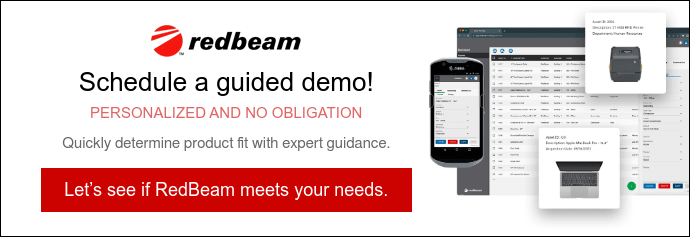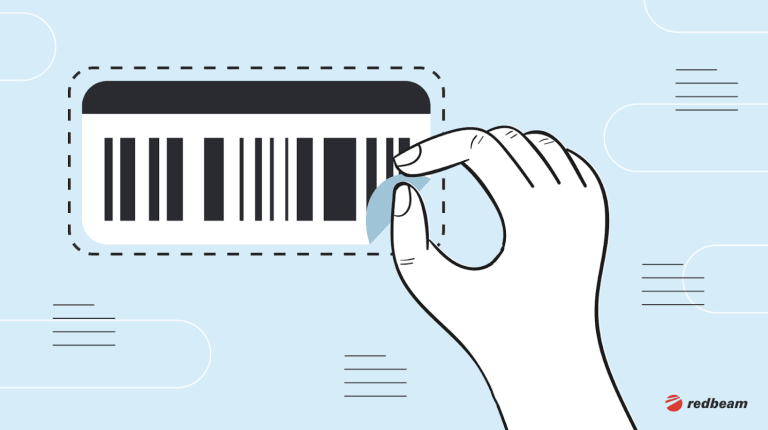Find it hard to keep track of your company’s assets? Without the right system, it's hard to know if your assets are in use in the field, checked out by employees, or need maintenance.That’s why you need an asset tagging system. Modern asset tagging systems help you not just know where your assets are but when they need maintenance and replacement, and they can even make it easier to file your tax returns. A unique label for each asset also lets you identify redundancies and avoid losses.
In this blog post, you’ll learn what an asset tagging system is and why businesses use it. Then, we’ll walk you through how to set up an effective asset tagging system for your company (and get your team to use it).
What is asset tagging?
Asset labeling is when an organization (business, school, agency, etc.) uses asset labels (also called asset tags) to identify and track their fixed assets. Fixed assets are the tangible pieces of property that allow an organization to function and create value. They’re equipment a business uses for over a year.
For example, a supermarket’s fixed assets include the shelving units where products are displayed, the meat slicer at the deli, and the shopping carts customers use. The supermarket invests in these assets and uses them to create value for customers over several years. Asset tracking enables the business to keep records of its property, its condition, and how much it is worth. And asset labels are a key part of asset tracking.
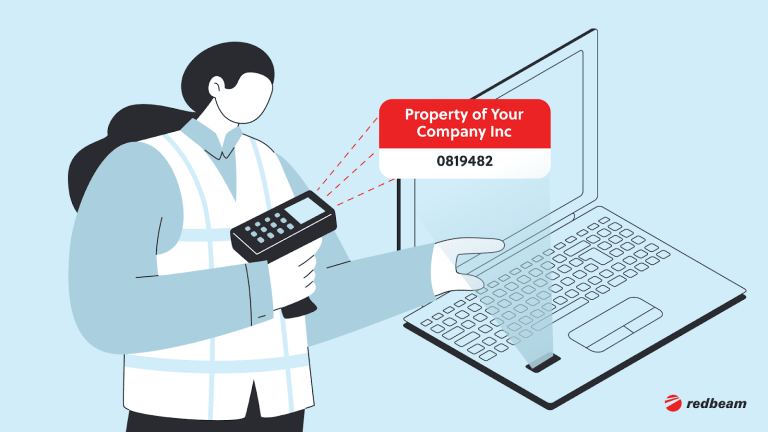
Asset labels are the tags or stickers you apply to assets, giving them a unique identifier, like a serial number, barcode, or RFID tag. You can then use data capture devices and asset management software to keep up-to-date records.
The barcode or other tag is linked to a record in the asset management system, where important details like product model and date of purchase are stored.
Why asset tagging matters — 5 ways asset tagging helps your business
Organizations label assets because they are important investments. Whatever a particular asset costs, the company wants to get as much use and value from it as possible. For construction firms, for instance, heavy equipment like excavators and concrete mixers cost tens of thousands of dollars. Asset tagging and tracking help firms monitor these investments and maximize their value.
What’s more, the rise of the information worker means businesses issue employees laptops. Employees might have misplaced a notepad or pen fifty years ago, but today, you trust employees with valuable equipment. Asset labels help you track who is using what (and whether they return it).
Beyond monitoring investments in physical property, asset labeling also helps reduce loss and theft. Once tagging your property, the system enables quick inventory counts by eliminating repetitive data entry.
1. Fixed asset labels are a cost-effective way to get a better handle on your assets
The primary purpose of fixed asset tags is to identify fixed assets as they move around your organization or into inventory (if fixed assets are not already inventoried). For fixed assets that are often moved, such as construction equipment or vehicles, asset labels make it much easier for staff to keep track of them.
Asset labels are relatively inexpensive, especially if you use barcode labels. You can get custom metalized tags for less than a dollar each. It’s a small investment that visually identifies your property and asset audits.
2. Asset tags help you save time and money and avoid regulatory headaches
Asset tags are simply a more effective way to get an overview of your existing assets. As a result, organizations use them to save time looking for physical assets and taking inventories, file taxes more efficiently, and easily maintain regulatory compliance.
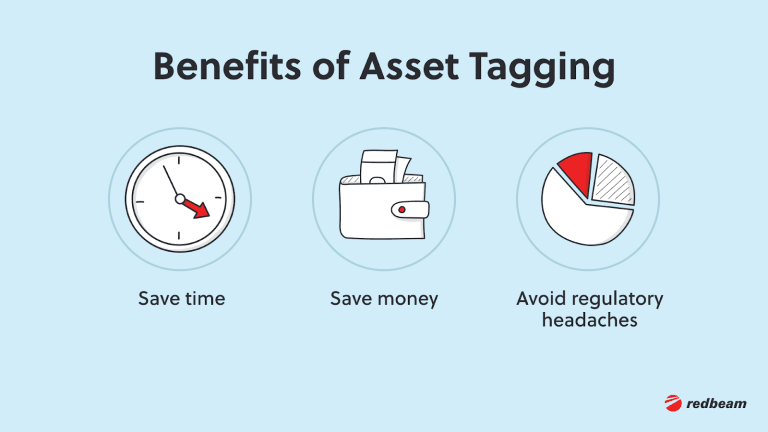
It’s not just that you can easily find assets because of the tags. The tags also let you create a real-time inventory index so you can track the maintenance and usage history of each asset. This makes it easy to ensure each asset is optimally maintained and to avoid unnecessary asset replacements ahead of schedule. This is why asset tagging is smart for industries like construction, where heavy machinery is a long-term investment. And corporations can use asset labels to keep track of technology.
Some other common users of asset labels are: - Schools (K-12 to Colleges and Universities) - Small Businesses - State, Local, and Federal Government Agencies
3. Asset tags are customizable to fit your needs
You can put as little or as much information on the fixed asset tag as you like. There are two things to remember: - Tags should always include the company name so employees and customers can easily identify them. - Each tag should also have a unique number — these numbers help ensure accuracy when counting inventory or checking against purchase orders.
Also, if you’re using (or plan to use) a fixed asset tracking system, include this unique number in a barcode ID. Barcode technology is the key to simplified record-keeping and reduced label costs due to the shorter time of inventory data entry. Radio frequency identification (RFID) and Bluetooth beacon (BLE) technology can also be used. These technologies enable a tag to be “read” without physically scanning the barcode, which can be helpful for high-dollar items or where many items are stored closely together, such as a server room or tool crib.
4. Asset labels are easy to print at scale (or buy online for SMBs)
You can print asset tags using a dedicated barcode label printer — these printers have become much more affordable and easier to use over the past few years. Today, you can connect to one via Bluetooth and use a specialized app to print the tags you need.
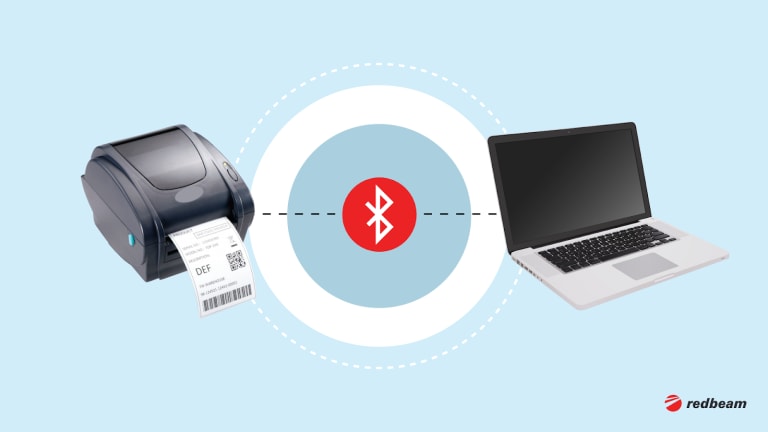
You could also buy tags online, but the more labels you need, the more cost-effective it is to print your own.
You can order asset tags through online retailers or directly from their manufacturer. Providers will also work with you to create the custom labels you need. Companies specializing in asset management labels can help you choose the style or materials you need.
If resources are extra tight, you can print black-and-white barcodes with a standard printer and cut them yourself. The drawback is that these stick-on labels may not hold up over years of wear and tear.
5. They help you reduce theft and loss of assets
The less control over your assets at any given time, the more likely they are to get lost or even stolen by employees.
This is a huge problem for companies with plenty of valuable equipment — like in landscaping, renovation, or even a design agency.
Asset tags and an effective cloud asset management system can help you keep track of your assets at all times. When you know which employee checked out what equipment, they are incentivized to return it on time.
And it’s not just about tracking individual assets. A better overview of all types of assets will help you make better decisions.
With total visibility of your asset catalog, your purchasing department can easily avoid making redundant purchases. It can also improve the visibility of the maintenance schedules of different assets and improve their lifespan, reducing costs further.
How to implement an effective asset tagging system in your business
To help your employees use asset tagging effectively to get a better overview of your assets, you need to create a system that makes that easy.
Find the right asset management software
The first step is to invest in the right asset management software.
Asset labels are a simple and inexpensive way to mark and track any asset, and they work best when paired with robust asset management software. While the asset labels stay with the equipment, the asset management system will store all the vital information about each asset.
Asset management software serves as a database to track and audit your assets. With all your data in one place, you can spot trends, analyze return on investment, and gain actionable insights into when and how assets need to be maintained or replaced.
Asset management software can also help you prevent losses and redundancies. For instance, if you don’t know a certain asset, you can look it up in the asset tracking software and see where it was last scanned. You can quickly locate what you need instead of searching for or replacing it. When shopping for asset-tracking software, it’s important to consider usability. Employees are more likely to use a user-friendly system. It also saves a ton of time when your asset management system can integrate with your other software and tools. RedBeam, for instance, offers REST APIs, which allow it to work with nearly any tool.
Invest in the necessary hardware — asset tag printers and readers
Don’t try to force a cheap solution with a mobile app and hard-to-scan QR codes. The extra headaches from potential issues down the line are rarely worth it.
Instead, we recommend investing in an enterprise-grade mobile device like the Zebra TC52 and a dedicated tag printer. Both the tags and the scanner are explicitly designed for that purpose. That means you don’t need to manually cut out tags or try to “find the right angle.” Plus, the tags and the reader are designed to withstand harsh environments.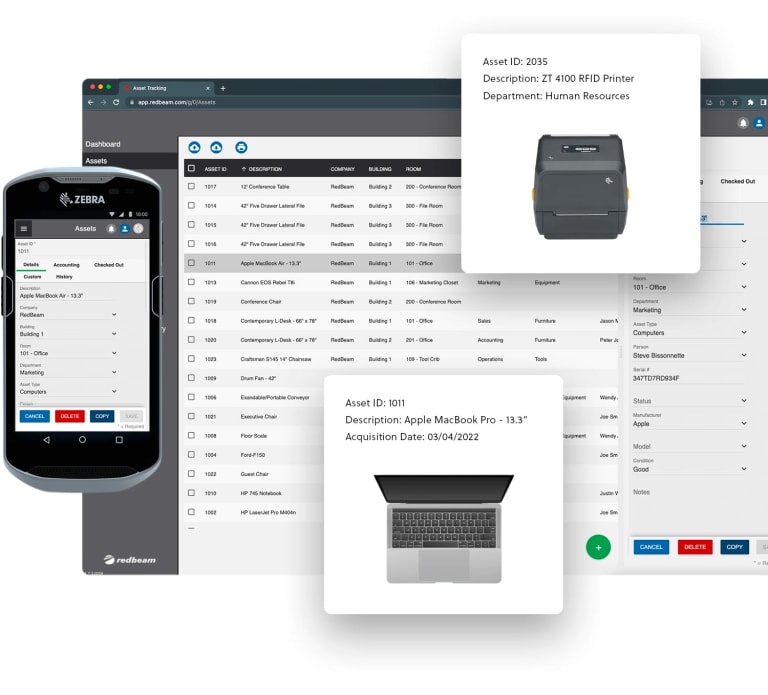
(Image Source) If you don’t need RFID, you can get a printer that suits your needs — today, they’re available and affordable for all types of asset tags.
Create guidelines for asset maintenance, replacement, and asset checkout
Make sure you have clear guidelines in place for when assets should be maintained and replaced. The ideal maintenance schedule will vary based on asset type, so your guidelines should reflect this.You should also outline how to handle employees taking assets home or into the field to complete specific work-related tasks. For example, this could be a check-out process where the employee scans the item and logs where the asset will be and for how long. To make sure the guidelines reflect reality, create them in collaboration with the workers who use and maintain the equipment.
Train the team to use the new system
It doesn’t matter how effective the new system is if your employees don’t use it. That’s why it’s important to hold workshops and train your employees in using the new system — including how to check out assets to take home, etc.

If you choose the right software and hardware solutions, using it will be a lot easier. A system that works won’t need much teaching to get your staff up and running with, after all. For larger companies, it’s important to boost employee buy-in in the project. One way to achieve this is to include them in the project early and get their input on decisions. In smaller companies, although the transition is smaller in scale, it can be just as impactful. So remember to communicate its value to your team and get them on board early.
Ready to experience the asset tagging system of the future?
When combined with asset management software, asset tags help you keep track of your fixed assets by telling you where they are, who’s using them, when they were purchased, and how much they cost. That makes accounting and tax season a lot easier. You can also use tags to mark items that need repairs or upgrades so you know what needs attention. Tags can be used in asset tracking systems for inventory purposes as well as insurance documentation to prove ownership. RedBeam works flawlessly with cutting-edge hardware designed by industry-leading companies, like Zebra Technologies. With their smart and robust devices, Zebra helps us provide customers with a comprehensive asset tracking package that is fully compatible with RedBeam software. Zebra's products are backed by their exceptional warranty and guarantee that improves the speed and efficiency of asset tracking operations. We are experts in Zebra products, and we can offer customized hardware recommendations to match your business needs and budget. Want to effectively track your assets throughout their life cycle, regardless of asset type? Experience first-hand how fixed asset tags can help with your asset management and physical inventory efforts — try RedBeam for free for 30 days.
